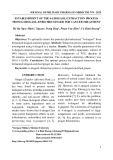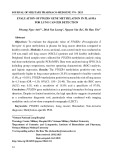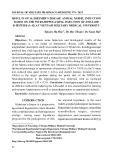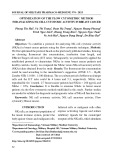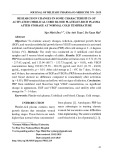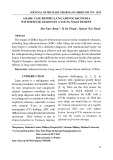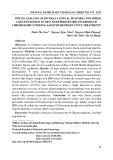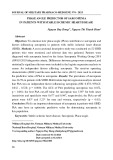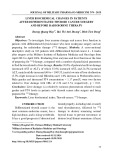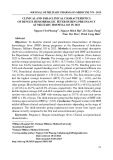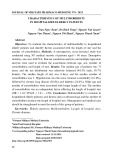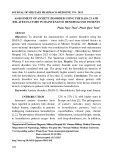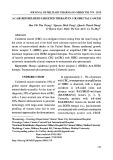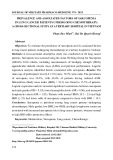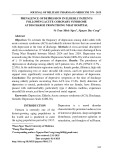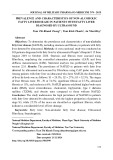
JOURNAL OF MILITARY PHARMACO-MEDICINE N04 - 2025
41
RESEARCH ON CHANGES IN SOME CHARACTERISTICS OF
ACTIVATED UMBILICAL CORD BLOOD PLATELET-RICH PLASMA
AFTER STORAGE AT NORMAL COLD TEMPERATURE
Ngo Minh Duc1,2*, Chu Anh Tuan2, Do Xuan Hai1
Abstract
Objectives: To evaluate sensory changes, infection, epidermal growth factor
(EGF), and vascular endothelial growth factor (VEGF) concentrations in activated
umbilical cord blood platelet-rich plasma (PRP) after cold storage at 2 - 6 degrees
Celsius (°C). Methods: The study was conducted on 8 umbilical cord blood
samples and 8 venous blood samples of adults. Results: EGF concentrations in
PRP from umbilical cord blood and adult blood after activation were 115.72 (51.59
- 217.61) pg/mL and 113.04 (69.71 - 155.73) pg/mL (p > 0.05), with VEGF
concentration being 193.99 (75.58 - 320.25) pg/mL and 16.12 (11.70 - 49.03)
pg/mL, respectively, p < 0.01. After cold storage at 2 - 6°C for 7 days, 10 days,
and 14 days, the concentrations of EGF and VEGF in PRP from activated umbilical
cord blood showed no difference compared to immediately after activation
(p > 0.05). PRP remained clear and yellow, with no signs of infection. Conclusion:
PRP from umbilical cord blood has high VEGF concentration, no significant
change in appearance, EGF and VEGF concentrations, and sterility after cold
storage for 7 - 14 days.
Keywords: Platelet-rich plasma; Umbilical cord blood; Change; Cold storage.
INTRODUCTION
Platelet-rich plasma contains many
growth factors that stimulate wound
healing stages. These factors are much
higher than normal when concentrated
from plasma [1]. Autologous PRP has
many advantages in treating chronic
wounds but encounters some difficulties
when implementing. The source is umbilical
cord blood with a lot of potential [2, 3].
1Vietnam Military Medical University
2Le Huu Trac National Burn Hospital
*Corresponding author: Ngo Minh Duc (yducqy@gmail.com)
Date received: 23/02/2025
Date accepted: 26/3/2025
http://doi.org/10.56535/jmpm.v50i4.1229





